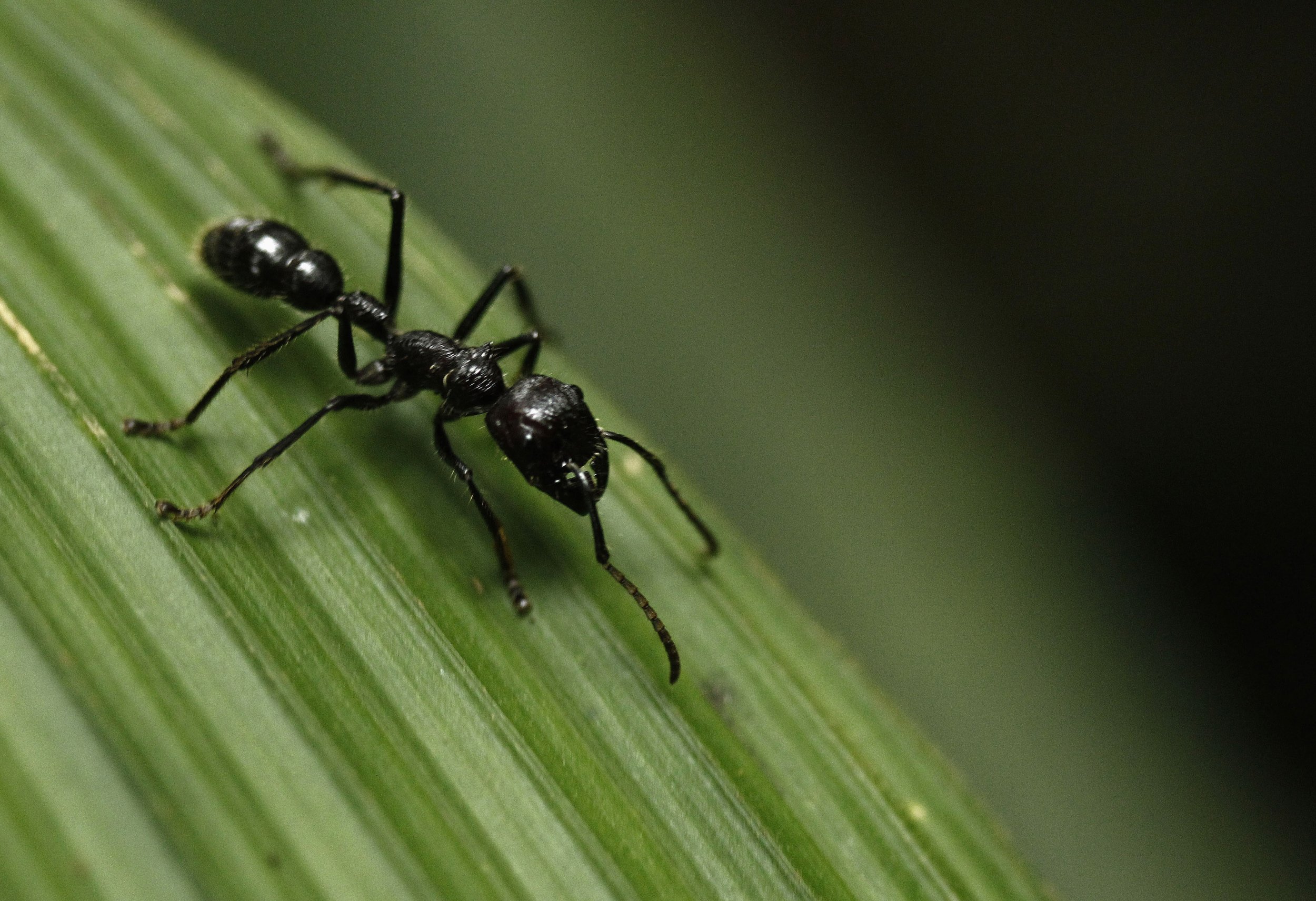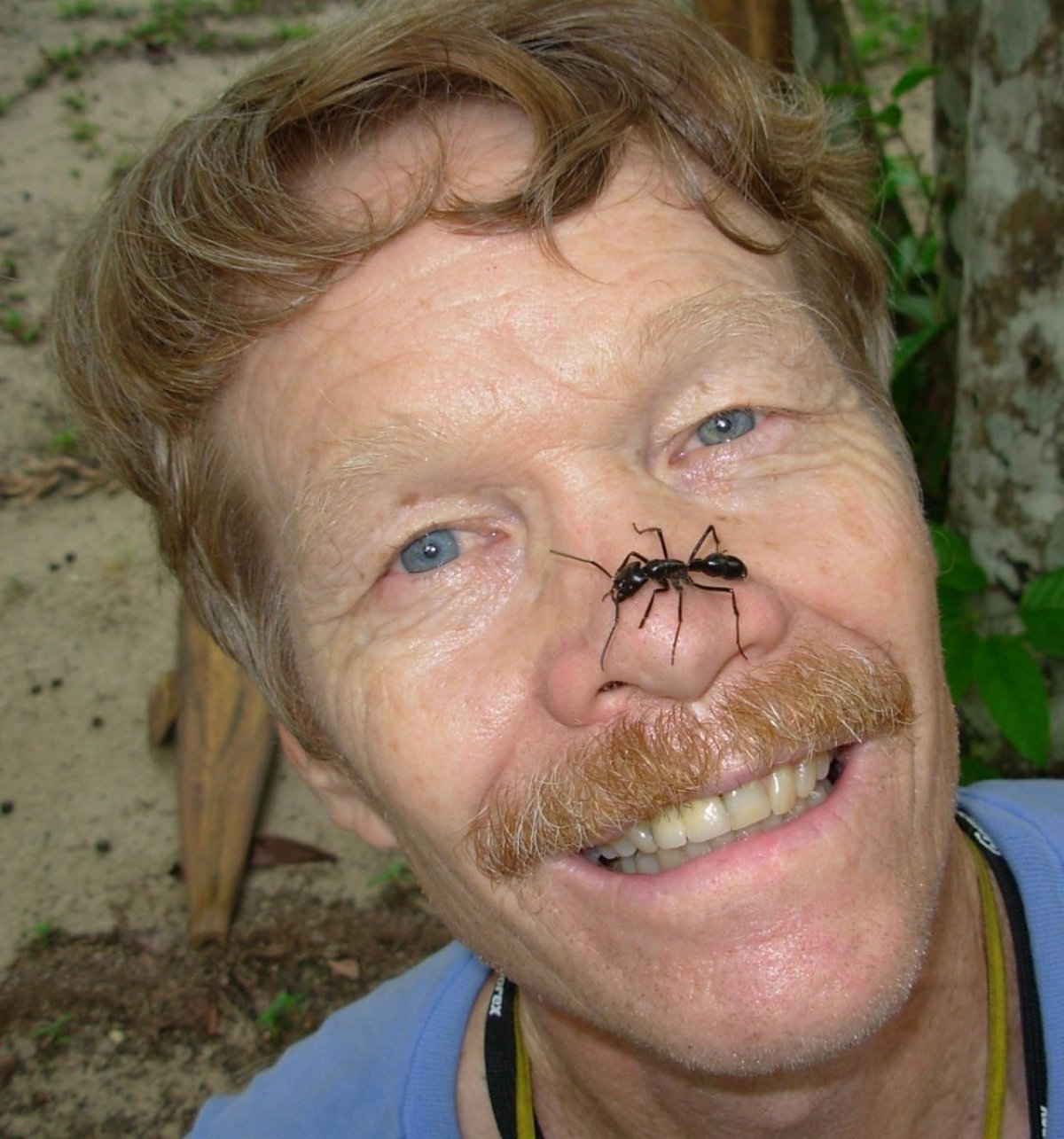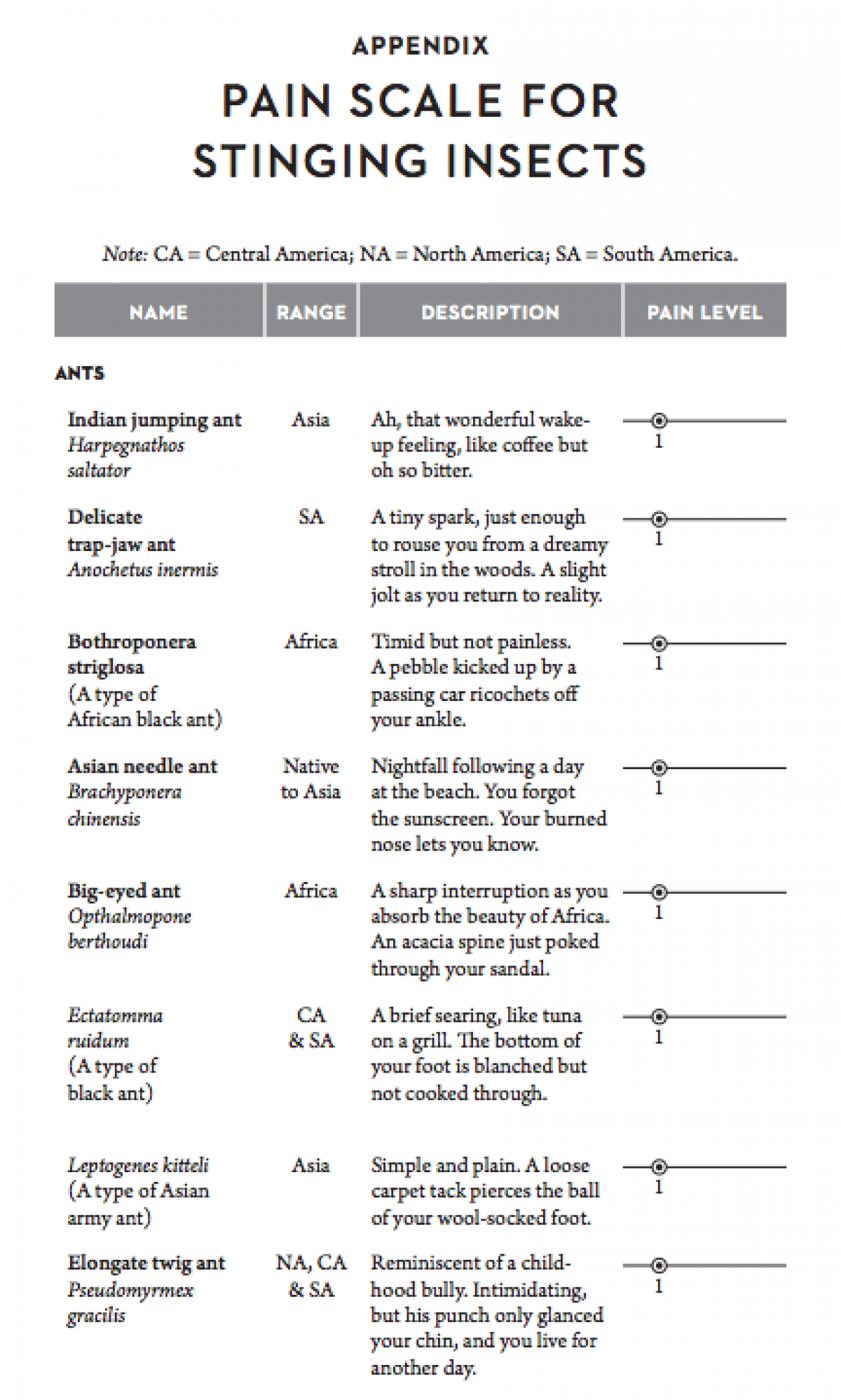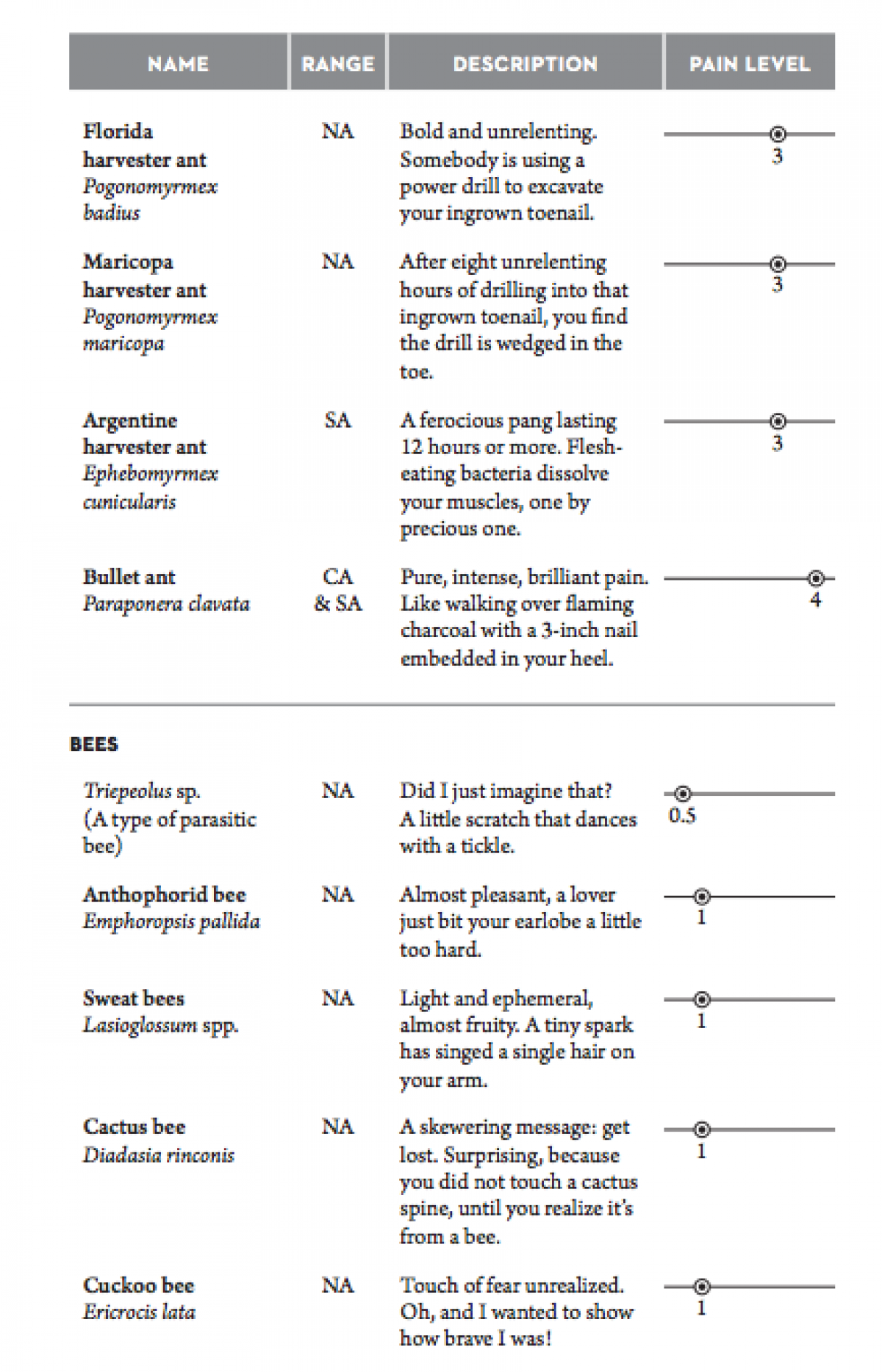
I met entomologist Justin Schmidt by chance in an Arizona ghost town. I was there to write a story about how the monsoon brings out tons of bizarre-looking creatures and the naturalists who chase them. Schmidt, one of those colorful bug-lovers, was relaxing with his family and, of course, running after insects. Cow-killers, to be exact. These red, fuzzy-looking wasps are renowned for their painful stings.
But exactly how painful? And how does this compare with something more common, like a honeybee?
Well, thanks to Schmidt, now we know. The entomologist created the Schmidt Sting Pain Index, which ranks how much the stings of various insects hurt, on a scale of zero to 4, and gives a colorful description of the resulting sensation.
There are several cow-killers, also known as velvet ants (though they are not ants), on the list. Schmidt describes the most fearsome of these—Dasymutilla klugii—this way: "Explosive and long lasting, you sound insane as you scream. Hot oil from the deep fryer spilling over your entire hand." It ranks a three out of four.
Meanwhile, honeybees (Apis mellifera) are a two out of four. "Burning, corrosive, but you can handle it," the entry goes. "A flaming match head lands on your arm and is quenched first with lye and then sulfuric acid."
Schmidt has now written an excellent book about his quest to understand everything there is to know about insect stings called The Sting of the Wild, to be published May 15. I talked to him about the book and how he first got started on this wild odyssey.
What insect has the most painful sting?
Bullet ants. They are great big black ants that live in South America. They live in colonies [of] about 3,000 adults and are actually very secretive, taking pains not to lead predators back to their nest.
How did you first get stung by one?
It was down in Brazil, and I of course knew about them from very colorful reports of others through the years. They can cause absolute agony for days sometimes. Of course, hearing these reports, I thought, These are obviously something I've got to work on.
In Brazil, we happened upon them. My helpers were kind of standing back, and I was trying to collect them. I had half-gallon jars and rubbed talcum powder on the inside so they couldn't climb out. One of my helpers hacked at the roots [near their nest] so I could collect more. But then they started boiling out. I was picking them up with a long forceps and putting them in jars, but one managed to get a piece of my index finger.
Man, that got my attention.

How much did it hurt?
It was immediate, excruciating pain—it felt like somebody had driven a branding iron into my finger. And when I held up my arm, it was trembling. I couldn't make it still. The pain came on in these waves. And there's a crescendo where you're screaming. Then it would back off, and you can breathe.
But it's disappointing in the sense that all this pain leaves almost no mark. It does create a hole in your skin because it's a big stinger—but [not much] swelling, none of the usual markings. For me, the pain went on for about 12 hours, but I got it off quickly, before it could deliver a lot of venom. Somebody who doesn't know could get hit much harder and be in pain for days.
The good news is that I don't recall ever seeing a record of somebody dying from it.
Some of these Amazonian tribes have puberty rites where these poor guys put on mitts that bullet ants are lodged into, and they'll get stung by as many as 30 to 40 of these.
What's the most dangerous insect, in terms of its sting?
Clearly it would have to be honeybees. Not because of one sting. But they can send 10,000 bees out to sting you. Especially dangerous are giant Asian honeybees, which live in the Himalayas. They live in these very large open combs [or nests] and can have 20 to 30 of them in one tree. If you disturb one of these nests, you could die. The same is true for honeybees.
There are also some hornets in Asia that have colonies of several thousand, and those can be deadly.
How many honeybee stings would it take on average to kill a person?
The rule of thumb is about six stings per pound of body weight. Say you weigh 100 pounds—you could theoretically withstand 600 without any medical treatment. The problem is, you might have somebody with an underlying medical issue, such as a heart problem or some allergy, that could make you more vulnerable. If you get more than a couple hundred stings, you should go to the ER.
At eight stings per pound of weight—that's where you have a 50-50 chance of survival. You should definitely go to the clinic in this case. Those aren't the odds I like. At 10 stings per pound or above, you may well be dead before getting to the clinic.
I heard a report of some African man getting stung about 2,500 times, and he survived.

How does it kill you?
In the case of honeybees, it would be a cardiotoxin, which damages the heart. I figured this out by doing research on mice. I separated out the two enzymes known to be toxic and found the one that attacks the heart, mellitin, causes death before the other toxin, called phospholipase, which more slowly destroys nerve and tissue membranes.
The book suggests that the second-most painful sting is caused by tarantula hawks, wasps that sting tarantulas and then lay their eggs in the immobilized arachnid. Tell me about them.
In terms of an absolute maximum peak in pain, they may be worse [than bullet ants]. It's not as agonizing, though it is more sharp and electrifying. But it only last two to three minutes and then goes away.
It's a pure, immediate, debilitating pain. It just shuts down your whole system. I've been stung [by tarantula hawks] probably about four times.
Do they cause a lot of damage?
No. They cause the most minor damage of anything I've tested. The tarantula hawk wants to have a nice yum-yum tarantula for its young. But it doesn't want it to die. Decomposing is not yum-yum. So it makes sense the venom wouldn't be that damaging.
Do you black out after being stung?
Not really. It's like, if you can imagine, getting a 25,000-volt electric shock—it short-circuits your normal neurological system. I tell people to lie down and scream if they get stung. That way they're not up and walking around, in which case they might run into a cactus or do something to really hurt themselves.
Have you ever come close to death or been really hurt by a sting?
No. I've done some perhaps harrowing things—I climbed on a cliff over a chasm to get to the nest of species called an artistic wasp, on a fairly small tree leaning over the edge. I came close to falling, but luckily I'm still here. I've certainly gotten a fat lip and swollen eye here and there. And a swollen tongue, once when a honeybee flew into my mouth while I was on a bike. ["It's immediate, noisome, visceral, debilitating," he writes of the experience in the book. "For 10 minutes life is not worth living."]

I've read claims by alternative-medicine guru Andrew Weil that stings can be good for you in some cases. Your thoughts on that?
There's a long tradition of this kind of thing, called apotherapy, which is the use of honeybee venom to treat arthritis, multiple sclerosis and other autoimmune diseases. It seems to work for only some people on these immune problems.
How do you come up with the rankings?
If somebody gets stung, whether they are an entomologist or whatever, I'm known around as a guy who wants to hear about it. Whatever they get stung by, I ask them about it. And then I ask them to compare it to other stings, like that of a honeybee. It's a very collaborative process.
Do you get stung on purpose or by accident?
They're almost all accidents. The times I've intentionally gotten stung are with small insects that won't sting you unless you really work at it.
How many times have you been stung and by how many different insects?
I usually say about 1,000—I've long ago lost track of the exact number. I've probably been stung 500 times by honeybees, 250 times by harvester ants. I don't count fire ants, because they usually sting en masse and are pretty minor. In terms of genus [the taxonomical grouping that is above species], I've been stung by about 83 different ones.
How did you first get interested in studying insect stings?
I think part of it was I grew up in a place [Appalachian Pennsylvania] that was nature-rich and where parents didn't have qualm about letting their kids run wild. We'd chase frogs and toads and salamanders, and I came to love the beautiful insects that came around as well, like the swallowtail butterflies and paper wasps and the yellowjackets.
In the book, you describe getting stung by a wasp as a young boy. Was that a formative moment?
I think it was. It made me want to learn more about these creatures. The adventure of learning more about them [became] a greater joy for me than the fear of getting stung.

When did you decide to go on this quest to chronicle the world's stinging insects?
I kind of found my way into it through the backdoor. A lot of people said you can't make a living studying bugs—get a serious job. So I started taking chemistry, which I loved. But in my master's program, I was stuck inside all the time doing chemistry research. I yearned to be outside.
I went to a professor who taught a course on entomology and chemistry and asked, Is there any chance for a washed-up chemist to go into entomology? And he said, "Good God, yes, man."
At this time. the field of chemical ecology was just emerging, understanding how insects communicate—which they of course do using chemicals. Most entomologists didn't know that much chemistry, so it was a huge advantage.
I started studying the venom of harvester ants [at the University of Georgia], about which nothing was known. I got stung, and that got my attention! Those things hurt for about four hours, and it feels like somebody is tearing away the nerves. The hairs on my skin would stand up and would produce sweat.
I asked the question: What's unique about the chemistry of this venom? And is it rare? To answer the second question, I decided to go on a quest and compare it to the chemistry of other insect venoms. Luckily there are lot of stinging insects in the Southeast, and sooner or later I got stung by a lot of things. I wrote down in my notebook how each one felt, and in the process I accumulated about 20 or so anecdotes about sting pain. And that led to the list.
Is there a correlation between how much pain is caused by a sting and how toxic or damaging it is?
There is a correlation, and it took about 30 years of collecting data, from about 60 taxa, to find that out. That's a lot of scatter, or noise, in the data. But generally if a sting is going to cause toxicity, it makes sense that there be a lot of pain, so that the animal being stung makes the connection and learns to avoid [the stinger].
Uncommon Knowledge
Newsweek is committed to challenging conventional wisdom and finding connections in the search for common ground.
Newsweek is committed to challenging conventional wisdom and finding connections in the search for common ground.
About the writer
Douglas Main is a journalist who lives in New York City and whose writing has appeared in the New York ... Read more
To read how Newsweek uses AI as a newsroom tool, Click here.








